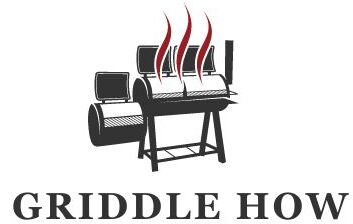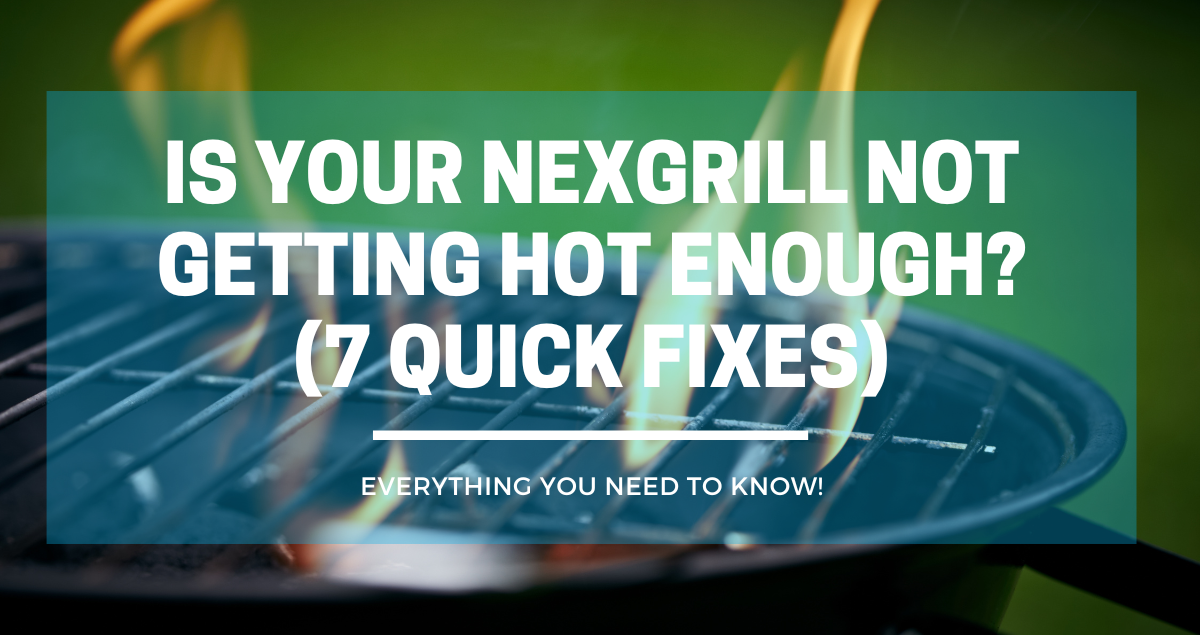Is your Nexgrill not getting hot enough?
Well you just landed on the right blog post.
We’ve compiled a troubleshooting guide to help you get to the bottom of this heat issue and have you back to grilling greatness in no time.
Let’s get started, shall we?
Possible Causes of Low Heat
#1. Gas Supply Issues
One possible culprit behind your Nexgrill’s low heat is a problem with the gas supply. If your grill is not getting enough gas, it will struggle to produce the high temperatures needed for a perfectly cooked meal.
Check that the gas tank is properly connected and turned on. Sometimes, a seemingly full propane tank may actually be empty, so it’s worth double-checking.
If you suspect a gas supply issue, try switching out the tank for a new one to see if that resolves the problem.
#2. Clogged Burners
Another common cause of low heat is clogged burners. Over time, grease, food particles, and other debris can accumulate in the burners, obstructing the flow of gas and limiting the heat output.
Cleaning the burners regularly is essential to maintain optimal performance. Remove the grates and carefully inspect the burners for any blockages.
Use a brush or a small wire to clear away any buildup, ensuring that the gas can flow freely and generate the necessary heat.
#3. Faulty Regulator
The regulator, which controls the flow of gas from the tank to the burners, can also be a culprit in cases of low heat. If the regulator is faulty or damaged, it may not be allowing enough gas to reach the burners, resulting in inadequate heat. Inspect the regulator for any signs of wear or damage, such as cracks or leaks.
If you suspect a faulty regulator, it’s recommended to replace it with a new one to ensure optimal gas flow and heat production.
#4. Insufficient Preheating
Proper preheating is essential for achieving the desired temperature on your Nexgrill. If you’re not allowing your grill enough time to preheat, it may struggle to reach the desired heat level.
Be patient and give your grill ample time to warm up before placing your food on the grates. This will ensure that the grill reaches its maximum temperature and maintains it throughout the cooking process.
#5. Windy Conditions
Believe it or not, windy conditions can also have an impact on the heat output of your Nexgrill. Strong gusts of wind can disrupt the flame, causing it to flicker or even extinguish, resulting in lower temperatures.
If you’re experiencing windy weather, try moving your grill to a more sheltered area or use a grill wind shield to protect the flame from gusts.
This will help maintain a steady and consistent heat, even in challenging weather conditions.
Troubleshooting Steps
#1. Check Gas Supply
The first step in troubleshooting your Nexgrill is to check the gas supply. Ensure that the propane tank is properly connected and turned on. If you’re using a natural gas grill, make sure the gas line is securely connected and that the supply is turned on. Sometimes, a simple oversight can be the culprit of low heat.
#2. Clean Burners
Over time, burners can become clogged with grease, debris, or even spider webs. These blockages can restrict the flow of gas and result in low heat output.
To clean your burners, start by turning off the gas supply and removing the grates and heat shields. Use a wire brush or a grill brush to gently scrub away any build-up on the burners.
#3. Inspect Regulator
The regulator is responsible for controlling the flow of gas from the propane tank to your grill. If it is faulty or damaged, it can cause low heat or even no heat at all.
Inspect the regulator for any signs of wear, such as cracks or leaks. If you notice any issues, it may be necessary to replace the regulator.
#4. Preheating Techniques
Proper preheating is essential for achieving the desired temperature on your Nexgrill. Ensure that you are allowing enough time for the grill to preheat fully before cooking.
Depending on the model, this can take anywhere from 10 to 15 minutes or longer. Preheating not only helps to reach the desired temperature but also eliminates any residual odors or contaminants from previous cooking sessions.
#5. Shielding from Wind
Wind can have a significant impact on the heat output of your Nexgrill. It can disrupt the flow of gas and cause temperatures to drop.
If you’re experiencing low heat on a windy day, try moving your grill to a more sheltered location or using a wind guard to protect the burners from gusts.
By shielding your grill from the wind, you’ll ensure a more consistent and higher heat output.
Remember to check the gas supply, clean the burners, inspect the regulator, utilize proper preheating techniques, and shield your grill from the wind.
Additional Tips
#1. Regular Maintenance
Just like any other appliance or machinery, regular maintenance is key to keeping your Nexgrill in top shape. By following a few simple maintenance tasks, you can prevent potential problems and keep your grill running smoothly.
1. Clean the Grill Grates: After each use, make sure to clean the grill grates thoroughly. Use a wire brush or grill brush to remove any leftover food particles or grease. This will not only prevent flare-ups but also ensure even heat distribution.
2. Check for Grease Buildup: Over time, grease can accumulate in the bottom of your grill. This can not only affect the heat distribution but also pose a fire hazard. Regularly check and clean the grease tray or pan to prevent any buildup.
3. Inspect the Gas Lines: Periodically inspect the gas lines for any signs of wear or damage. Look for cracks, leaks, or loose connections. If you notice any issues, it’s important to address them immediately to avoid any safety hazards.
4. Keep the Exterior Clean: While it may not directly affect the performance of your grill, keeping the exterior clean can help maintain its overall appearance and protect it from corrosion. Wipe down the exterior surfaces with a damp cloth and mild detergent when needed.
#2. Proper Storage
Proper storage of your Nexgrill when it’s not in use is essential for its longevity. Here are a few tips to ensure that your grill stays in good condition:
1. Cover Your Grill: Invest in a high-quality grill cover that fits your Nexgrill properly. This will protect it from the elements, such as rain, snow, and UV rays, which can cause rust and deterioration.
2. Store in a Dry Place: When not in use, store your grill in a dry location, such as a garage or shed. Avoid exposing it to extreme temperatures or humidity, as these can damage the internal components.
3. Secure the Propane Tank: If you’re using a propane-powered Nexgrill, make sure to disconnect and secure the propane tank when storing the grill. Store the tank in a well-ventilated area away from any heat sources or open flames.
#3. Professional Assistance
If you’ve followed all the troubleshooting steps and maintenance tips but your Nexgrill is still not performing as expected, it may be time to seek professional assistance. A certified technician or grill expert can diagnose any underlying issues and provide the necessary repairs or replacements.
Always prioritize safety when dealing with gas-powered grills. If you suspect a gas leak or any other serious issue, it’s best to contact a professional immediately. Don’t attempt to fix it yourself if you’re unsure or inexperienced.
Conclusion
If your Nexgrill is not reaching the desired heat, troubleshoot potential issues like gas supply, burner cleanliness, and regulator functionality.
Prioritize regular maintenance and proper storage to prevent problems and extend your grill’s lifespan.
If issues persist, consider seeking professional assistance for effective solutions.
Related Articles
- Green Mountain Grill Keeps Turning Off
- Blackstone Griddle Too Hot on Low
- Traeger Auger Stops After a Few Minutes
- Bradley Smoker Problems
- Cookshack Grill vs Big Green Egg
- Louisiana Grill vs Pit Boss
- PK Grill vs Weber 22
- Yoder Smoker vs Kamado Joe
- Napoleon Prestige vs Weber Genesis
- Napoleon Rogue XT 425 vs Weber Spirit E 330

